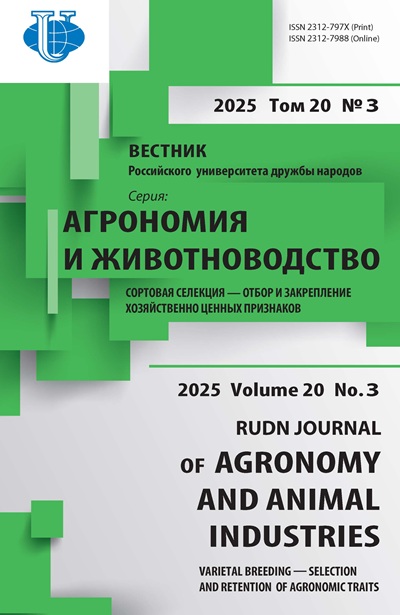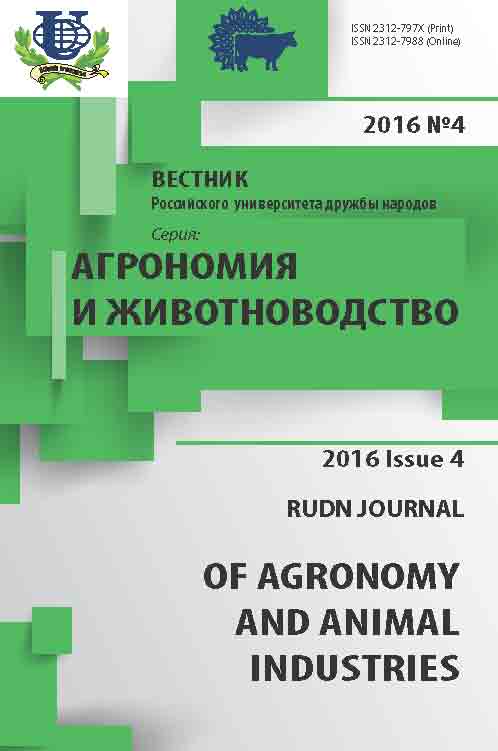Озеленение как элемент устойчивого городского развития: оценка экономических выгод, измерение результатов политики и примеры из практики
- Авторы: Алексеева Ю.С.1, Меньших Д.А.1, Кудрявцева О.В.1
-
Учреждения:
- Московский государственный университет имени М.В. Ломоносова
- Выпуск: № 4 (2016)
- Страницы: 51-62
- Раздел: Статьи
- URL: https://agrojournal.rudn.ru/agronomy/article/view/14989
- DOI: https://doi.org/10.22363/2312-797X-2016-4-51-62
- ID: 14989
Цитировать
Полный текст
Аннотация
Статья показывает важность городского озеленения как одного из средств достижения целей устойчивого городского развития. Авторами представлены экологические, социальные, культурные, пространственные выгоды от развития городского озеленения, а также выделены основные ограничения к развитию озеленения в условиях крупного города. Показано, что оценка экономической выгоды лесов, а также адекватное измерение результатов политики в области озеленения играют важную роль в процессе реализации принципов устойчивого городского развития. Статья представляет существующие методы оценки озеленения и иллюстрирует их внедрение на примерах из российской и зарубежной практики.
Об авторах
Юлия Сергеевна Алексеева
Московский государственный университет имени М.В. Ломоносова
Email: ju.alekseeva@gmail.com
Ленинские горы, 1, Москва, Россия, 119991
Дарья Александровна Меньших
Московский государственный университет имени М.В. Ломоносова
Email: luo1@mail.ru
Ленинские горы, 1, Москва, Россия, 119991
Ольга Владимировна Кудрявцева
Московский государственный университет имени М.В. Ломоносова
Email: luo1@mail.ru
Ленинские горы, 1, Москва, Россия, 119991
Список литературы
- Brundtland Commission, 1987. Our common future: Report of the world commission on environment and development. Stockholm, Sweden: United Nations World Commission on Environment and Development.
- Bobylev S. Insicators of sustainable development for Russia. Social-ecological technologies. 2012. № 1.
- Bobylev, S., Perelet, R. 2013. Sustainable Development in Russia. Saint Petersburg, Russian Federation: Russian-German Environmental Information Bureau.
- BUUF City Status Reports (2003) Baltic University Urban Forum City Status Report V. Project part-financed by the European Union (European Regional Development Fund) within the BSR INTERREG III B Neighbourhood Programme 2003.
- Chapple, K., 2015. Planning sustainable cities and regions: Towards more equitable development. Abingdon, Oxon; NewYork: Routledge.
- Chaturvedi, A., Kamble, R., Patil, N.G., et al., 2013. City-forest relationship in Nagpur: One of the greenest cities of India. Urban Forest. Urban Green. 12, 79-87.
- Chernikov V., Aleksanin R., Golubev A. Agroecology. Kolos, 2000. 536 p.
- Chiesura, A., 2004. The role of urban parks for the sustainable city. Landscape Urban Plan. 68, 129-138.
- Davey Resource Group, A Division of the Davey Tree Expert Company, 2009. Benson Hill Public Property Tree Inventory and Assessment Report.
- El Ghorab H.K., Shalaby H.A., 2015. Eco and Green cities as new approaches for planning and developing cities in Egypt. Alexandria Engineering Journal 55, 495-503.
- Emas, R., 2015. The Concept of Sustainable Development: Definitions and Defining Principles.
- Ernstson, H., 2013. The social production of ecosystem services: a framework forstudying environmental justice and ecological complexity in urbanized land-scapes. Landsc. Urban Plan. 109, 7-17.
- Gascon, M., Triguero-Mas, M., Martínez, D., Dadvand, P., Rojas-Rueda, D., Plasència, A., 2016. Residential green spaces and mortality: a systematic review. Environ. Int. 86, 60-67.
- GetGreen Columbus. Planning Tool Exchange, 2016. Retrieved from http://www.planningtoolexchange.org/project/getgreen-columbus.
- Goddard, M.A., Dougill, A.J., Benton, T.G., 2010. Scaling up from gardens: biodiversity conservation in urban environments. Trends Ecol. Evol. 25, 90-98.
- Gomez, F., Gil, L., Jabaloyes, J., 2004. Experimental investigation on the thermal comfort in the city: relationship with the green areas, interaction with the urban microclimate. Build. Environ. 39, 1077-1086.
- Grahn, P., Stigsdotter, U.A., 2003. Landscape planning and stress. Urban For Urban Greening 2 (1), 1-18.
- Haaland C., Konijnendijk van den Bosch C., Challenges and strategies for urban green-space planning in cities undergoing densification: A review, Urban Forestry & Urban Greening 14 (2015) 760-771.
- Hall, T., 2010. Goodbye to the backyard? The minimization of private open space in the Australian outer-suburban estate. Urban Policy Res. 28, 411-433.
- Hartig, T., Mitchell, R., de Vries, S., Frumkin, H., 2014. Nature and health. Annu. Rev. Public Health 35, 207-228.
- Keivani R., 2010. A review of the main challenges to urban sustainability, International Journal of Urban Sustainable Development 1:1-2, pp. 5-16.
- Kudryavtseva O., Bobylev S., Solovyeva S., Indicators of sustainable development for Russia: urban dimension. On the way tosustainable development of Russia. 2015. 74. P. 16-23.
- Kulakova S. Assesment of urban plantings condition. Geographical vestnik. 2012. № 4 (23).
- Lee, A.C.K., Maheswaran, R., 2011. The health benefits of urban green spaces: a review of the evidence. J. Public Health (Oxf.) (33), 212-222.
- Lottrup, L., P. Grahn, and U.K. Stigsdotter. 2013. Workplace Greenery and Perceived Level of Stress: Benefits of Access to a Green Outdoor Environment at the Workplace. Landscape and Urban Planning 110:5-11.
- Lovasi, G.S., Schwartz-Soicher, O., Quinn, J.W., et al., 2013. Neighborhood safety and green space as predictors of obesity among preschool children from low-income families in New York City. Prev. Med. 57, 189-193.
- Mell, C., 2009. Can green infrastructure promote urban sustainability? Eng. Sustainability 162, 23-34.
- Mössner, S. 2016. Sustainable Urban Development as Consensual Practice: Post-Politics in Freiburg, Germany, Reg. Stud. 50, 971-982.
- Musakwa, W. & Van Niekerk, A. Environ Dev Sustain (2015) 17: 547. doi: 10.1007/s10668-014-9560-7.
- OECD, 2012. Compact City Policies: A Comparative Assessment, OECD Green Growth Studies. OECD Publishing, Paris.
- Nilsson K., Akerlund U., Konijnendijk C., Alekseev A., Caspersen O., Guldager S., Kuznetsov E., Mezenko A., Selikhovkin A., 2007. Implementing urban greening aid projects - The case of St. Petersburg, Russia // Urban Forestry & Urban Greening № 6.
- Op Heij T.J.P. (Tim), 2012. Environmental influences on consumer behaviour, October 2012, Eindhoven.
- Power, A., 2001. Social exclusion and urban sprawl: is the rescue of cities possible? Reg. Stud. 35, 731-742.
- Priemus, H., Rodenburg, C.A., Nijkamp, P., 2004. Multifunctional urban land use: a new phenomenon? A new planning challenge? Built Environ. 30, 269-273.
- Sarajevs V., Street tree valuation systems, Research note, Forestry Commission England, 2011.
- Tian, Y., Jim, C.Y., Tao, Y., 2012. Challenges and strategies for greening the compact city of Hong Kong. J. Urban Plann. Dev. 138, 101-109.
- The Delegation for Sustainable Cities, 2012. Sustainable urban development projects: Projects that have received financial support from the Delegation for Sustainable Cities.
- Valuing London’s Urban Forest: Results of the London i-Tree Eco Project, Treeconomics London, 2015.
- Wlodarczyk. D. (ed.), 2007. Green Structure in Development of the Sustainable City. Baltic University Urban Forum. Urban Management Guidebook V. Baltic University Press, Uppsala.
- Wolf Kathleen L. Trees and business district preferences: a case study of Athens, Georgia, U.S. / International Journal of Arboriculture 30(6). November 2004. P. 336-346.
- UN Habitat (United Nations Human Settlements Programme), 2015. Global Country Activities Report: 2015 - Increasing Synergy for Greater National Ownership.
- UN General Assembly, 1972. United Nations Conference on the Human Environment.
- UNDESA (United Nations, Department of Economic and Social Affairs), 2013. An Integrated Strategy for Sustainable Cities. UN-DESA Policy Brief No. 40.
- UNDESA (United Nations Department of Economic and Social Affairs), 2014. World Urbanization Prospects: The 2014 Revision. (New York: 2014).
- UNDESA (United Nations Department of Economic and Social Affairs), 2016. Global Sustainable Development Report 2016, NewYork, July.
Дополнительные файлы















